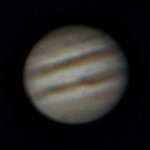I don't take things personally, but I hope you don't mind me throwing it back at you!PS, don't take any of this personally, I'm just playing devil's advocate.
My point was concluded with a period. The standard way of concluding a statement in English.And your point is?
Let me see if I can find it...ah here it is:I'm sorry, but I'd like to see your raw data for the survey you've done
Survey Questions: 2 Survey Respondents: 1
Will nerfing the ADS improve game play for you? Yes: 0 No: 1
Will you be less likely to willingly explore if the ADS is nerfed? Yes: 1 No: 0
Any other data you'd like to see?
So?No, but you have to push out quite far now to find something that doesn't have someone else's fingerprints on it and we're only 4 months in. What's it going to be like in a year, 2 years, 5 years?
I think your definition of "quite far" needs to be shared. I've gone out what I consider "quite far" and turned around cause I couldn't go any further than 65kLy from Sol. Are you saying every icy rock in the middle of settled space has already been detail scanned? The ADS that apparently ruins people's fun doesn't put a pilot's name on the system. Only a detailed surface scan will put a pilot's name on it as the discoverer.
So it's a sandbox game, play the way you want to play.
You're right, but you're willfully ignoring the point. Let me put it another way then. Using parallax to discover stellar bodies is similar to stopping to smell the roses. You've heard the phrase. It's just a platitude with no literal purpose.This applies to EVERY SINGLE human activity where someone derives satisfaction.
What do you actually get from smelling the roses? You experience a different smell--some claim it's a good smell, most if they're honest are sort of indifferent--and if you're unlucky you poke your finger on a thorn or experience an allergic reaction that requires the use of your epipen.
What do you actually get from parallax discovery? A planet that could have been found with a 5 second press of the ADS, but you didn't use the ADS--some claim that's good and displays your exceptional skill, most if they're honest are sort of indifferent--and if you're unlucky it's probably just an icy planet with very little value that people using the best technology (ADS) available instead of their naked eyes just skipped.
Yeah, griefing is a valid play style. Unless it involves some exploit recognized by Frontier or actual memory adjusting cheats they're using the same game mechanics as you are. If they want to defecate all over their little section of the sandbox, all it will accomplish is fewer people willing to play in that section of the sandbox. It's a big sandbox. Blocking players is simple enough.Some people enjoy griefing. Is that valid? Elite's a sandbox, anything goes right?
I have to admit, you've lost me on this rebuttal. I've tried turning it over and over in my head, but I'm not seeing an angle. Are you saying that ships are allowed to be over powered, but internal modules available to any ship are not allowed to be over powered?No, because ships *can* be OP.
I thought the analogy was pretty clear. Collecting a set quantity of profits in a Type 6 is slower and more tedious than collecting the same quantity of profits in a Type 9. Discovering stellar bodies using parallax is slower and more tedious than discovering stellar bodies using the ADS. The point is removing the Type 9 (ADS) will not give the profits earned (discovered bodies) using the Type 6 (Parallax) any added value. It's still just a slower and more tedious way of doing something. If you apply additional personal value to flying a Type 6 (using parallax discovery) then you are able and welcome to use it.
That's your opinion, and it's certainly valid to a degree. If you look at technological advancement though, the line on the graph appears to be exponential. After an additional 13 centuries, we may not even recognize what humans become as humans.But I will say this - the speed of exploration is utterly irrelevant to this discussion, it depends entirely on what there is to discover. It took the human race several 10's of thousands of years to get to the point where we'd explored most of one planet. To be able to determine is a system had anything of interest in less than 10 seconds doesn't quite sit right with me.
Parallax discovery is very simple, which is why it possible to do with the naked eye. The principle is to take two pictures of the same background stars from two different locations, or at two different times. The background stars are so far away, they will have negligible parallax or position change based on viewer's position. Bodies in the system will will have a noticeable parallax and change position between the two images. A simple difference program can check these images faster, more accurately, and with less eye fatigue than a human in much less than 10 seconds.
Think about all the other technology that needs to be available in this game setting. The Frame Shift Drive relies on Frame Dragging which is a natural phenomenon caused by a rotating mass's gravity. The level of understanding of gravity has to be pretty high to put this to practical use. The FSD detects the depth of natural gravity wells and slows down accordingly. Gravity has no range limit, it extends indefinitely and simply gets weaker with distance. Why is it so hard to believe a highly specialized expensive piece of scanning technology could detect and localize these gravity wells from extreme ranges?
Is "Because I think it's not fun" really the only argument?

